A Wining Cost Estimate
That Helps You To Win More Construction Projects
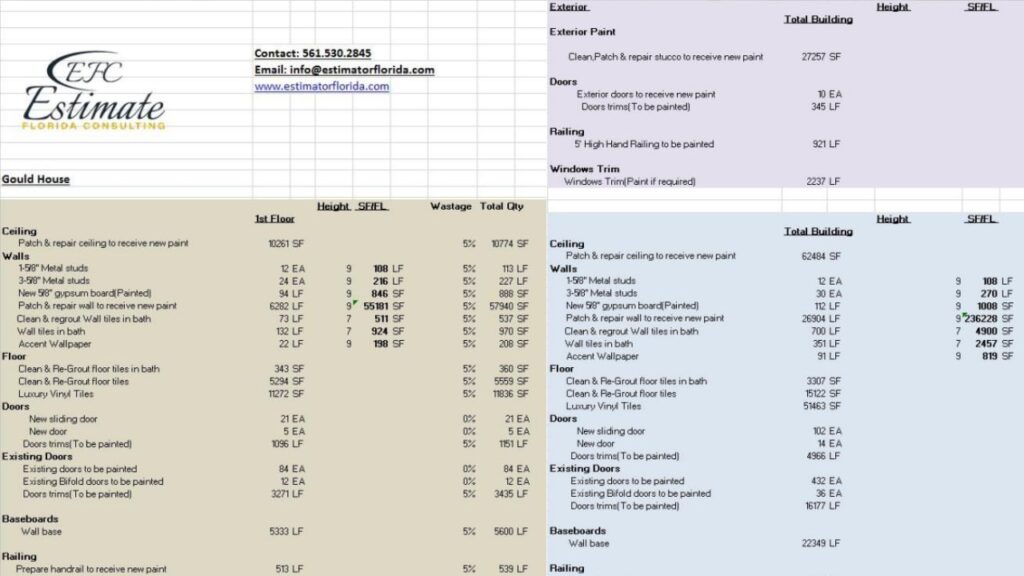
Energy-Saving Windows and Entryways: A Comprehensive Guide to Sustainable Living
Energy-saving windows are made of low-emission glass that provides thermal insulation by cutting back on heat loss during cold weather and reflecting sunlight during warm seasons. For maximum efficiency, these windows must fit snuggly. Energy-saving doors come with filled gaps created by durable weather-stripping materials having an inner foam core.
Protection strategies such as shading devices, window films, or curtains aid in enhancing the effectiveness of energy-efficient systems. Efficient windows promote natural daylighting, which saves electricity bills associated with lighting.
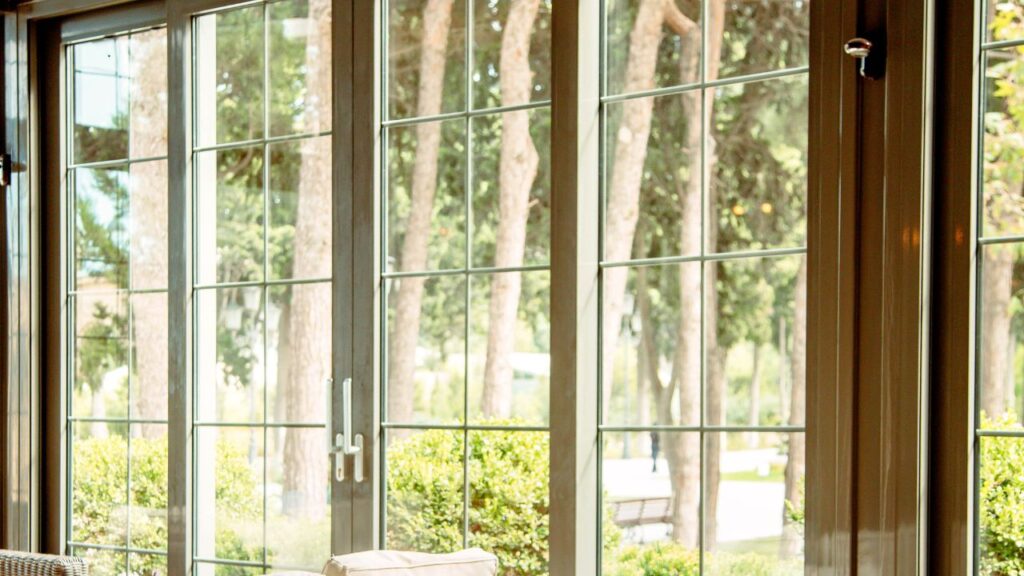
Making practical changes to our living spaces is key for environmental change; indeed “a penny saved is a penny earned” thus make sure to install energy-reducing doors and windows in your home, office or industry for sustainable living whilst saving money!
Is your window more drafty than the cold open to ‘Game of Thrones’? It’s time to upgrade to energy-efficient windows!
Energy-efficient windows can lower your bills, and you can get detailed window replacement cost estimates to plan your sustainable upgrade.
To make your home energy-efficient, you need to be mindful of your choice of windows. In the section “Energy-Efficient Windows” with sub-sections “Types of Energy-Efficient Windows, Factors to Consider When Choosing Energy-Efficient Windows, Benefits of Energy-Efficient Windows, Tips for Maintaining Energy-Efficient Windows,” we will guide you through everything you need to know to pick the right windows for your home.

Energy-saving windows are an excellent choice for improving energy efficiency in your home. Let’s discuss some types of these windows that can help you save on your energy bills!
Window Type | Description |
|---|---|
Double-Pane Windows | Two panes with a sealed air space to trap heat or cold between them. |
Triple-Pane Windows | Three panes with two sealed air spaces to provide even more insulation. |
Low-E Glass Windows | A special coating on the glass to reflect sunlight and reduce heat transfer. |
Each type of window has unique features designed for different uses. For example, double-pane windows are excellent at trapping heat in your home, while low-e glass windows block UV rays.
When we installed triple-pane windows in our old house, our energy bills went down considerably. We were surprised at the difference these high-efficiency windows made!
Choosing energy-efficient windows is a lot like choosing a partner – it’s all about the right fit and keeping things sealed tight.
Energy-Efficient Windows are a crucial part of modern homes. There are various vital aspects to consider when selecting energy-efficient windows for your home, such as the window’s material, glazing type, and frame. The following are the Factors to Consider When Choosing Energy-Efficient Windows:

Aspect | Description |
|---|---|
Window Material | Select durable materials that can withstand harsh weather conditions. |
Glazing Type | Choose double or triple glazed windows with low emittance coatings to reduce heat loss. |
Frame Type | The window frames must be made of wood, fiberglass, or vinyl to provide optimum insulation. |
When choosing energy-efficient windows, it is essential to consider factors such as window orientation, shading devices, and air infiltration. Properly designed shading devices and window placement can reduce the amount of solar heat gain through the windows. Air infiltration can be minimized by selecting tight-fitting windows.
Pro Tip: Proper installation of energy-efficient windows is equally important and will provide maximum energy-saving benefits. Hire a qualified professional contractor who specializes in installing energy-efficient windows to get the most out of your investment.
Save energy and money with energy-efficient windows because the only thing that should be drafty in your home is your sense of humour.
We help contractors find new customers with high-converting websites and locally targeted niche-specific lead-generation programs. You’ll never need to worry about running out of work again! We focus on quality over quantity with our leads for contractors.
Energy-Efficient Windows offer numerous advantages to homeowners, including cost savings, comfort, and sustainability.
In addition to these benefits, Energy-Efficient Windows can also reduce fading of interior materials caused by UV radiation damage. This feature is particularly beneficial for furnishings and artwork that are sensitive to sunlight exposure.
Pro Tip: When selecting Energy-Efficient Windows for your home, look for products that have earned the ENERGY STAR label, as this indicates that they meet or exceed strict government standards for energy efficiency.
Taking care of energy-efficient windows is like maintaining a relationship – give them attention, keep them clean, and they’ll keep you warm and happy.
Energy-Efficient Window Maintenance: Practical Guidelines
Maintaining energy-efficient windows is essential for optimal performance and longevity. Here are some practical tips to follow:
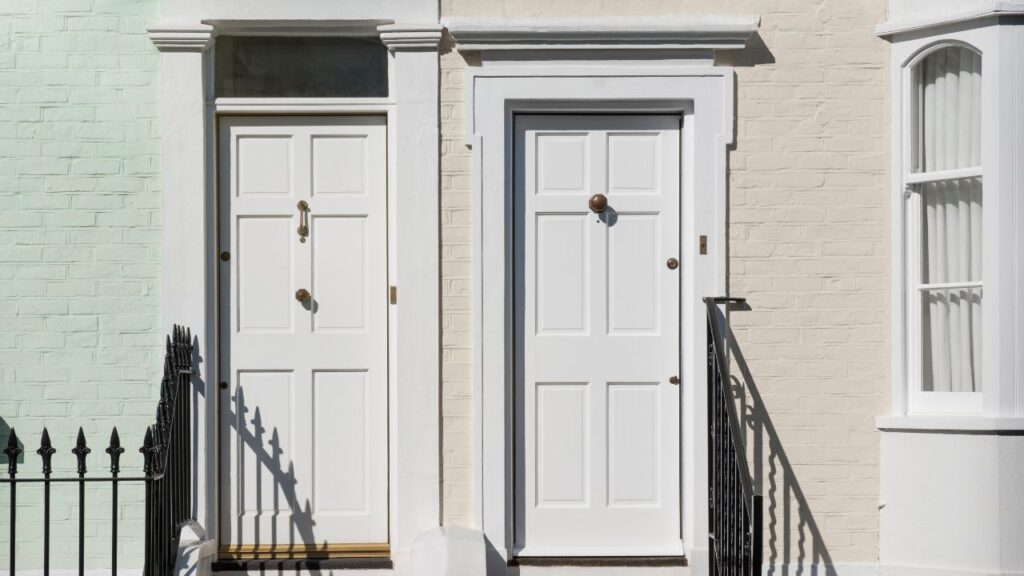
Additionally, it’s crucial to schedule annual professional inspections or tune-ups that can detect issues early on before they escalate into costly repairs or replacements. Remember that proper maintenance not only saves energy but also enhances indoor comfort levels.
Don’t miss out on the benefits of energy-efficient windows due to neglecting maintenance. Follow these guidelines and seek expert advice when needed to improve their performance and lifespan while cutting down on your cooling or heating bills.
Energy-efficient doors: because who doesn’t want a warmer, cozier home without breaking the bank?
To help you make your home more energy-efficient, this section focuses on Energy-Efficient Doors, discussing the Types of Energy-Efficient Doors, Factors to Consider When Choosing Energy-Efficient Doors, the Advantages of Energy-Efficient Doors, and Techniques for Preserving Energy-Efficient Doors.
Discover the transformative power of hiring professional contractors for your project. Unlock a wealth of expertise and experience to ensure success. Get started today and see the difference!
Energy-efficient doors are an essential component for modern homes. Doors that prevent energy loss and save electricity bills are gaining popularity. Let’s see some different kinds of doors that qualify as energy-efficient.
It is crucial to purchase energy-efficient doors based on their U-factor rating, which implies how well they can prevent heat loss. The lower the number, the better it is at preventing heat loss.
Apart from just saving money on electricity bills, there are several other advantages to opting for energy-saving doors – ranging right from better indoor air quality with reduced drafts, higher resale value to safeguarding your family’s health.
A Florida couple swapped out their old front porch door with a new fiberglass model featuring dual-pane low-E glass with argon gas fill and reinforced lockset hardware. From the first month onwards, they noticed a substantial reduction in their energy bills from over $500/month to just $250/month. They also praised its added safety features and stylish design elements when compared to its predecessor.
Choosing an energy-efficient door is like finding a unicorn, it’s rare but totally worth it.
When looking to install energy-efficient doors, several important factors come into play. First, consider the door material – solid wood or steel offer greater insulation than their hollow counterparts. Second, check for Energy Star certified doors with Low-E glass and tight weatherstripping for maximum insulation. Third, think about the door’s framing and installation to ensure a snug fit.
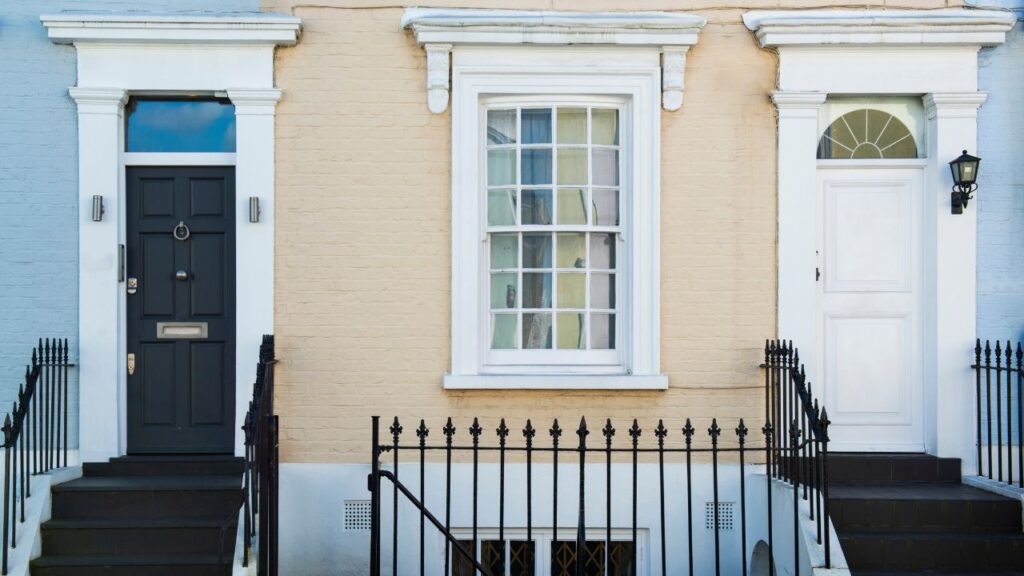
Another crucial aspect to keep in mind is the door’s U-factor rating; a rating of 0.25 or lower denotes a high level of insulation. Additionally, keep an eye out for potential tax credits and rebates offered by utility companies for installing energy-efficient doors.
Did you know that The Environmental Protection Agency’s Energy Star program estimates that homeowners can save up to $500 annually on their energy bills by installing energy-efficient windows and doors? Save money on your electricity bill and get a bonus workout every time you open and close your energy-efficient doors.
Energy-efficient doors are an essential investment for any homeowner who wants to reduce their carbon footprint while saving on costs. These doors keep heat in during winter and block the heat from entering your home during summers. They also provide maximum insulation, which is helpful for maintaining a comfortable indoor temperature.
Benefits of energy-efficient doors:
Investing in an energy-efficient door brings more than just monetary advantages. They create cost-effective solutions by reducing greenhouse gas emissions and protecting against future price increases in non-renewable energy sources.
You can maximize the benefits of these doors with some simple steps. Ensure that the weather stripping or sealant around the door is secure, close curtains or blinds over glass panels, and invest in draft stoppers to maintain efficiency.
Keep your energy-efficient doors happy by giving them regular TLC – that’s Tender Loving Care, not Total Loud Chaos.

Energy-efficient doors are a crucial element in any home that intends to minimize energy consumption. By following these essential steps, you can maintain the efficiency of your doors, reducing energy usage and your carbon footprint.
It is important to note that energy-efficient doors not only decrease carbon emissions but also help save money in the long run by decreasing heating and cooling costs.
Energy savings begin at small details such as maintaining weatherstripping or purchasing an insulated door. By utilizing these tips, you will be on your way towards combating climate change one step at a time.
Once a homeowner swapped out her old front door for an eco-friendly one, she found that her annual heating bills were reduced drastically. The switch was simple yet effective in minimizing her carbon footprint and saving money simultaneously.
Upgrade your home to energy-efficient windows and doors and watch your electricity bill drop faster than a clumsy baby holding a glass of milk.
To ensure proper installation of energy-efficient windows and doors for sustainable living, hiring the right professional is crucial. Knowing what to expect during the installation process can help you prepare for disruptions to your daily routine. Additionally, being aware of common installation mistakes to avoid can save you from costly repairs in the long run.
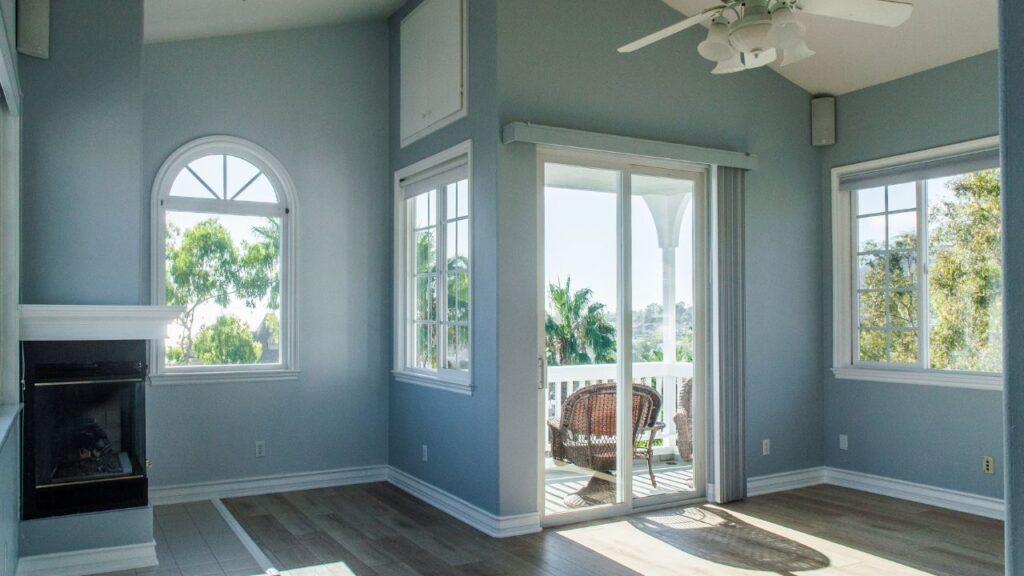
The process of selecting the most fitting professional for the job of installing energy-efficient windows and doors can be quite a daunting task. It is crucial to partner with a qualified and experienced specialist who is familiar with this particular field.
It would be best if you searched for professionals who have the necessary certifications, relevant experience, and positive client reviews. Be sure to discuss your expectations, budget, and timeline from the onset to avoid future misunderstandings.
Moreover, ask for testimonials from previous clients or visit the installer’s website to evaluate their work quality and ethics. This will ensure that you find an expert who can handle your unique requirements within your budget satisfactorily.
As these installations can be rather expensive, try searching for professionals who offer payment options such as financing and different payment plans.
Pro Tip: Always ensure the installer has a valid license from regulatory bodies in your state to guarantee high-quality workmanship.
Get ready to see your windows and doors get a makeover that even Queer Eye’s Bobby Berk would be proud of during the installation process.
Maximize your construction business’s potential with our competitive financing options

For those planning to install energy-efficient windows and doors, it is important to know what to expect during the process. Here’s a guide to help you understand what you’ll go through:
It’s important to note that each installation may differ depending on various factors such as house size or chosen products. Understanding the process beforehand can help you prepare for a seamless experience.
If you’re worried about missing out on potential benefits of energy-efficient installations, act now! With summer approaching, installing these products could help regulate indoor temperatures while reducing energy bills.
If you want your energy-efficient windows and doors to actually be efficient, avoid the common mistake of installing them upside down.
Energy-Saving Window and Door Setups: What You Must Avoid
When Installing energy-efficient windows and doors, there are several common mistakes you should avoid. These installation blunders can affect the effectiveness of your set up, causing higher energy bills and reduced comfort levels at home.
Make sure to avoid these mistakes for a successful setup. To make your windows and doors more efficient, ensure they are installed by trained professionals. This ensures proper measurement-taking, insulation installation and prevents any inaccuracies during the process.
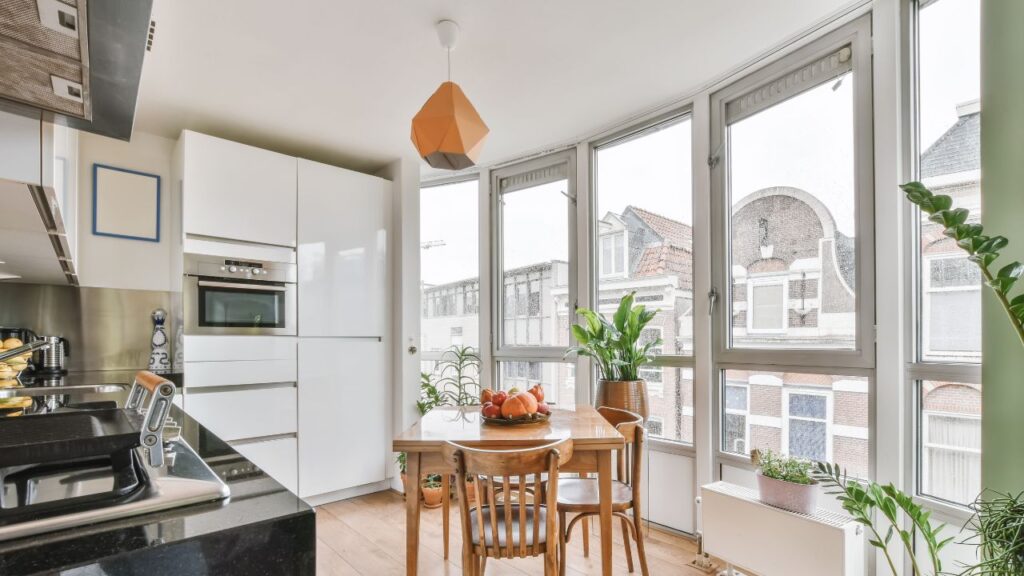
It’s worth noting that installing energy-saving windows reduces the amount of money spent on utility bills significantly. A report from the United States Department of Energy revealed that homeowners normally save between $150-$500 annually in heating and cooling costs when they install these worthwhile upgrades. Who needs a sugar daddy when you can finance your energy-efficient windows and doors instead?
To finance your energy-efficient windows and doors for sustainable living, you need to know the available financing options and tax credits and incentives that can help reduce the financial burden. This section covers the solutions to these challenges with the title “Financing Energy-Efficient Windows and Doors” and the sub-sections – “Available Financing Options” and “Tax Credits and Incentives.”
Energy-Efficient Windows and Doors Financing options can be tricky to navigate. Here are some ways to finance your energy-efficient window and door project without breaking the bank.

It’s essential to note that each financing option comes with its benefits and drawbacks. Researching options will help you choose the best choice based on your needs.
Suppose you postpone renovating windows and doors due to lack of funds; it may cause more significant expenses in the long run if replaced later in comparison with those costs at today’s price point. Don’t wait until your windows stop working; act now, leverage the available financing option(s). Start saving money on your heating/cooling bills while updating the look of your home!
Save money on your taxes while saving money on your energy bill? It’s like the government is paying you to be frugal.
For homeowners looking to finance energy-efficient windows and doors, there are various Tax Credits and Incentives available that can be availed. These incentives can be in the form of federal or state tax credits, rebates or even loans.
A Table summarizing the Tax Credits and Incentives for energy-efficient windows and doors is given below:
Type of incentive | Amount/Percentage | Eligibility |
|---|---|---|
Federal tax credit | Up to 10% | Based on cost |
State rebate | Up to $500 | Based on cost |
Property Assessed Clean Energy (PACE) Financing | Varies | Based on the program |

It’s worth noting that these incentives can vary from state to state, so homeowners should check their local government websites to ensure they’re taking advantage of all relevant programs.
Additionally, some tax credits require specific certifications or conditions to be met before applying. For example, homeowners may need to ensure their windows meet minimum efficiency ratings, such as those set by ENERGY STAR®.
To maximize benefits from these incentives, homeowners should consider combining them with other financing options like traditional home improvement loans. By doing so, they can make energy-efficient upgrades more affordable while reducing utility bills over time.
Overall, understanding Tax Credits and Incentives related to energy-efficient windows and doors is crucial for homeowners looking to save money while improving their homes’ environmental impact.
Upgrade your windows and doors, save energy and the planet, and maybe even impress your eco-warrior Tinder date with your sustainable living game.

Energy-efficient windows and doors are essential components of sustainable living. By reducing energy consumption, they help to mitigate climate change and save homeowners money in the long run. Installing high-quality windows and doors can significantly enhance the thermal performance of a home, resulting in reduced heat loss during winter and minimized heat gain during summer.
To achieve maximum efficiency, it’s crucial to select the right type of glazing, frame material, and window style that suit your needs. Double or triple glazed windows can reduce heat loss by up to 70% compared to single glazed ones. Additionally, uPVC or composite frames will provide better insulation than aluminum or timber frames. Casement or awning windows are more energy efficient than sliding types because they offer a tighter seal when closed.
Other factors that affect energy efficiency include window orientation, shading options, airtightness, and ventilation systems. South-facing windows allow for more sunlight to enter your home during winter months while north-facing ones restrict solar radiation entry during summer. Planting trees or installing shades on east/west-facing windows will help prevent unwanted solar gain. Ensuring proper sealing between the window frame and wall can reduce air infiltration levels significantly.
Lastly, maintaining regular inspections and maintenance of energy-efficient windows will ensure their longevity as well as prolong their performance efficiency. Ensuring weatherstripping is intact, checking for any gaps around the window frame that may lead to air leaking, addressing any water penetration issues can save significant amounts on an energy bill over a period, thus achieving sustainable living through an investment in Energy efficient Windows & Doors.
Energy-efficient windows and doors are designed to minimize heat transfer between your home’s interior and exterior. They are constructed with energy-saving features that reduce the amount of air conditioning or heating needed to maintain a comfortable living space.
While initial costs may be higher than traditional windows and doors, energy-efficient products can lead to significant long-term savings on energy bills. Additionally, many governments offer incentives and rebates for upgrading to energy-efficient options.
By reducing the amount of energy needed for heating and cooling, energy-efficient windows and doors also reduce carbon emissions and help preserve natural resources. Additionally, many energy-efficient options are made with sustainable materials.
Energy-efficient windows and doors may include features such as double-paned glass with low-E coating, foam insulation, weatherstripping, and multi-point locking mechanisms.
To choose the right energy-efficient windows and doors for your home, consider your region’s climate and the orientation of your home. Also, look for products that are Energy Star certified and meet local building codes.
Here I am going to share some steps to get your construction cost estimate report.
You can send us your plan on info@estimatorflorida.com
Before starting your project, we send you a quote for your service. That quote will have detailed information about your project. Here you will get information about the size, difficulty, complexity and bid date when determining pricing.
We do construction cost estimating and prepare a detailed report for your project. At last, you finalize the report and finish the project.
561-530-2845
info@estimatorflorida.com
Address
5245 Wiles Rd Apt 3-102 St. Pete Beach, FL 33073 United States
561-530-2845
info@estimatorflorida.com
Address
5245 Wiles Rd Apt 3-102 St. Pete Beach, FL 33073 United States
All copyright © Reserved | Designed By V Marketing Media | Disclaimer
IMPORTANT: Make sure the email and cell phone number you enter are correct. We will email and text you a link to get started.
By clicking “I Agree” above you give Estimate Florida Consultin express written consent to deliver or cause to be delivered calls and messages to you by email, telephone, pre-recorded message, autodialer, and text. Message and data rates may apply. You are able to opt-out at any time. You can text STOP to cancel future text messages.